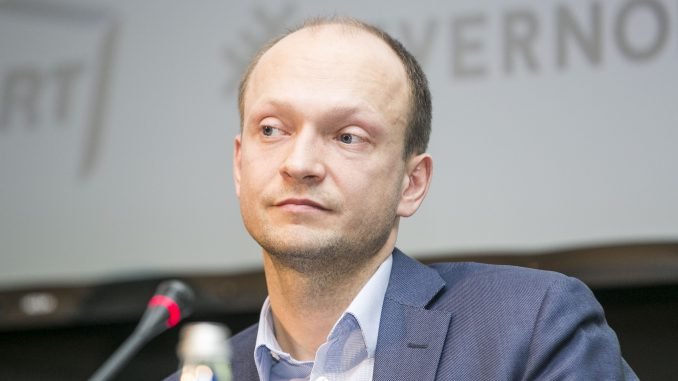
In Q1 this year, the average monthly gross income was 9.4% higher than a year ago. Wage growth in Lithuania looks even more impressive is net wage growth – due to the reduced tax burden, wages grew for most by an entire 14.6%. The question arises, can such growth rates be sustained and what trends can we expect in the future?
To many, the question of whether wages are growing too quickly may appear macabre – the average monthly wage in Lithuania is not particularly high, thus it would seem that rapid growth is natural and desired. In the end though, it is not our desires, nor the achievements of our neighbouring countries and not the politicians’ promises that decide, what wage levels and wage growth in a country is sustainable.
In the long term, the most important factor impacting wages is the added value created by the staff. Respectively, this created value depends on not only the staff’s competence and motivation, but also the equipment provided – the technical and software equipment, working conditions and even the wage paid. Yes, often there is a reflexive link between wages paid and productivity.
What role do government institutions play in wage growth in Lithuania? Increasing the minimum monthly wage and greater public sector wage financing has a natural limit. In the long term, what is far more important is state regulatory environment, bureaucratic burdens, the tax system and legal system efficiency – all this helps or hampers employing and conjoining physical, financial and human capital. Thus, when discussing the opportunities for sustainable increases in citizen income and purchasing power, we should not side-line these far more important components of economic welfare.
Unsustainable wage growth?
And what is unsustainable wage growth? It is a situation we observed in Lithuania from our entry into the EU up to 2008. Back then, wages grew far more rapidly than productivity, a large part of companies depending on exports lost the expenses competitiveness, which in the best cases led to wages being frozen and in the worst cases – mass dismissals and bankruptcies. Could such a situation repeat in the near future?
For a few years now, wages have been growing in excess of 8% a year, however the work market is not overheating. Part of this rapid growth is linked to the increasing transparency of wages – in recent years, an increasing number of companies have ceased the practice of paying at least part of the wage under the table. It is likely that due to the merger of employment taxes and other reasons, this trend will continue this year as well.
What is most important is that in this business cycle, a large gap did not form between work expenses and created value. From the start of this decade, the added value created by staff in the manufacturing production sector grew by 57%, while wages grew by 76%. Similar trends were also prominent in the retail and transport sectors – productivity and wages grew respectively 50 and 73%.
Lithuanian exporters are strong
Despite this gap, so far most Lithuanian exporters have retained export markets, export commissions, as well as profitability and fairly stable pricing. Almost every fifth company still says that one of the main factors limiting their expansion is a lack of staff, thus premises for further wage growth remain.
However, looking at slowing global economic growth and global risks, some companies will likely increase operation expenses more carefully and modestly. This trend can already be seen – this year, the average wage growth in the private sector was 7.2%, while in the public sector is was twice that, reaching an entire 14.3%.
Here emerge at least two major unresolved problems. The first is that while public sector wages have increased more rapidly as of late, in the future it will be more difficult to find the resources to do so.
In order to continue increasing public sector wages and wage growth in Lithuania solely economic and budget revenue growth will no longer suffice. In order to secure sustained wage growth, we will have to discuss unpopular structural changes – public sector institution network optimisation and tightening of belts. A more effective public sector operation model and more effective service and institution network would mean that fewer staff could provide services of no lesser quality, while receiving greater wages for it.
The second problem is fairly high structural unemployment – even with the number of free jobs remaining near record heights, there are still 95 thousand unemployed in Lithuania. Almost half of them do not have a job for over six months and this shows either very limited competences or a lack of motivation. The large part of free jobs are in sectors requiring higher qualification staff such as industry, IT, finance and insurance, as well as public sector.
Need more jobs outside of cities
Unfortunately, usually those in long term unemployment do not have suitable competences. Often, they live further away from the major cities, where most of the jobs are concentrated and they are not inclined to change their place of residence. Investment and job creation outside of the major cities would help in wage growth in Lithuania , however the main measure here should be more effective requalification programmes and better overall education services.
The resolution of these problems would help secure sustainable long term wage growth, rather than encouraging a quickly expiring wage sprint. In sports, sprinters receive more attention, but in the job market, marathon runners are preferred.

Be the first to comment